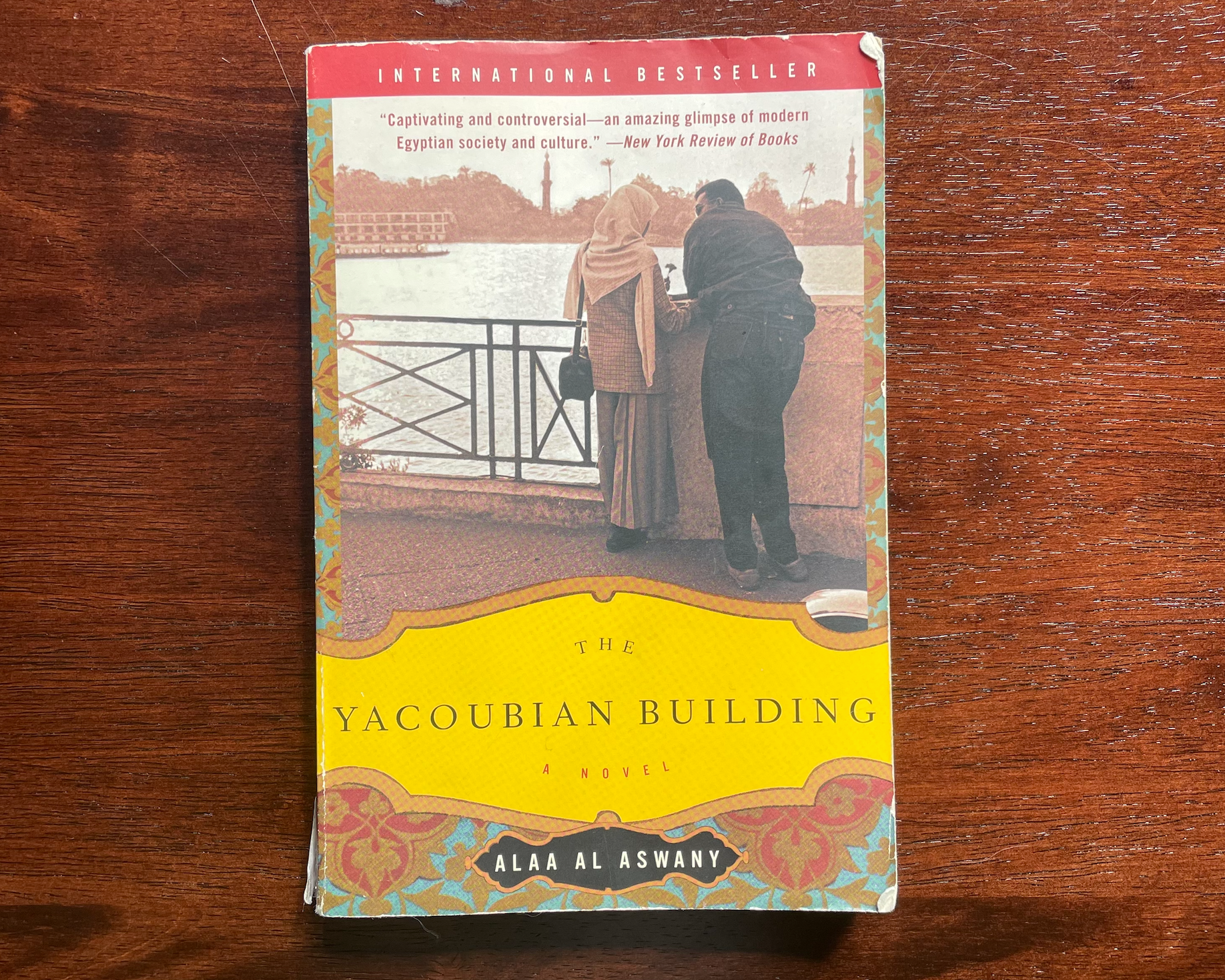In this post, I’ll be reviewing perhaps one of the best novels I’ve ever read, at least one of the best I’ve read in recent years: The Yacoubian Building by Alaa Al Aswan.
I first came across The Yacoubian Building the same way I learn about a lot of other books I read: a podcast. More specifically, it was while listening to The Maverick Show podcast with Matt Bowles. He was interviewing Zein El-Amine, a Lebanese-born writer, activist, and professor.
Zein didn’t speak much about the book–just that he assigns it to his students in one of the courses he teaches about global literature. But based on the other things he was saying throughout the interview and how much his story and journey resonated with me, I ordered the book right away.
Another reason why I bought the book almost immediately was because I’ve been wanting to learn a lot more about Islamic cultures and Arab-speaking countries. In this regard, and in so many other ways, the book did not disappoint, but more on that later.
A Brief Synopsis of The Yacoubian Building
The Yacoubian Building is basically about a unique building in downtown Cairo where a wide range of people live. From the working class people who live in crammed spaces on the rooftops to some of Egypt’s richest who had offices in the Yacoubian Building, the space is one that represents the wide spectrum of Egypt’s class system.
In the book, which has been translated into nine languages and was made into a film AND tv series, there are about 6 main characters who all undergo personal transformations. This is one of the things I like most about the book: Al Aswany is able to develop the characters in a fully fleshed out way that is far from hurried.
Take Busayana, for instance. She starts off as an adolescent who doesn’t know anything about the world and the ways in which power manifests. Throughout the book, she encounters situation and after situation that completely change her outlook on life. In some ways, she grows to be cynical, far from the naive girl she once was. Al Aswany probably could have left her character here. Instead, he continues her development, such that she comes to have a more balanced outlook–recognizing the powers and inequities that exist around her, while never straying too far away from herself.
It would be pretty difficult (and long) to provide a summary of each character’s plot. But most of it comes down to similar situations as Busayana, meaning that the most of the character’s outlook on life change in really important ways. Some are for the better, while others are not so positive in nature.
“Then came the 1970s, and the downtown area started gradually to lose its importance, the heart of Cairo moving to where the new elite lived, in El Mohandiseen and Medinet Nasr. An inexorable wave of religiosity swept Egyptian society and it became no longer socially acceptable to drink alcohol.”
— The Yacoubian Building, p. 33
At its essence, The Yacoubian Building is a book about power, religion, corruption, sexual repression, loss, and love. It’s important to remember that this book would look very different outside the Arab world, especially outside of Egypt in the 1990s, when the book is set. Many of the themes are about the seemingly diametrically opposed worlds of Islamic fundamentalism and Western society.
A Modern Look at Egypt
I haven’t been to Egypt yet, so I can’t necessarily “verify” the things Al Aswany writes about. However, I get the sense that he’s actually helping to uncover a lot of the things that likely aren’t spoken about regarding Egyptian society, particularly in the modern age.
“If you and your sister make problems or start talking, we know how to put you in your place. This country is ours, Hamidu. We have a long reach and we have all kinds of ways of dealing with people. Choose the kind you want.
— The Yacoubian Building, p. 196
Readers will learn about the role that government plays in the life of Egyptian citizens: from policing their lives to repressing anything deemed as opposing their totalitarian rule. Al Aswany illuminates how the country has become poverty-stricken in the face of dictatorship control in 1990s Egypt. Even the rich and powerful characters in the book are unable to fully escape the corruption plaguing Egyptian society at the time.
One of the other ways in which Al Aswany gives readers a modern look at Egypt is by comparing it to before the revolution of 1952 and tracing Egyptian society throughout the 20th century. It’s a novel, for sure, but you might be surprised at just how much you learn while reading The Yacoubian Building.
A Brief Note on Structure
The structure of The Yacoubian Building is insanely engaging. There’s only two chapters in the entire book (which I haven’t yet figured out what the actual separation is for). Within those chapters, Al Aswany goes back and forth between each of the main character’s journeys.
There’s no real order in which he does this, just a clear separation from when he’s about to focus on one character compared to another. What I like most about this, though, is that he doesn’t attempt to finish each scene neatly prior to moving to the next. In many ways, each section includes a cliffhanger. But it’s important to note that the cliffhanger doesn’t come off as tacky, like he’s trying too hard to build suspense.
The break between scenes is natural and flows incredibly well. As you’re reading you’ll want desperately to skip ahead to see what happens but then you’ll be reminded of another incredibly engaging scene by one of the other characters. I know, it’s cliche, but in every sense of the word, this book is truly a page-turner.
Al Aswany’s Writing
Smooth. Rich. Crisp. Captivating. Expressive. Elegant.
Al Aswan’s writing is absolutely no joke. To illustrate exactly what I mean, here’s a long excerpt from page 5 of The Yacoubian Building:
He is one of those who fall completely and hopelessly into the sweet clutches of captivity of the female and for whom women are not a lust that flares up and, once satisfied, is extinguished, but an entire world of fascination that constantly renews itself in images of infinitely alluring diversity–the firm, voluptuous bosoms with swelling nipples like delicious grapes; the backsides, pliable and soft, quivering as though in anticipation of his violent assault from behind; the painted lips that drink kisses and moan with pleasure; the hair in all its manifestations (long, straight, and demure, or long and wild with disordered tresses, or medium-length, domestic and well-settled, or that short hair à la garçon that evokes unfamiliar, boyish kinds of sex).
Al Aswany, 2004, p. 5
I read that passage over and over again. It’s exactly that type of descriptiveness and smoothness in which Al Aswany puts pen to page. One only wishes to write like him!
The Yacoubian Building is great in so many ways. It gives us a peak into the intricacies of modern Egyptian society. We get to learn about Islamic culture. We’re able to understand power dynamics in the Arab world.
Yet even if those things weren’t the case, I would highly recommend The Yacoubian Building simply for the writing. It is a phenomenal piece of literature that will fascinate anyone with the slightest interest in the magic of words.
Rating: 9.5/10
‘Till Next Time, Travel Friends!







